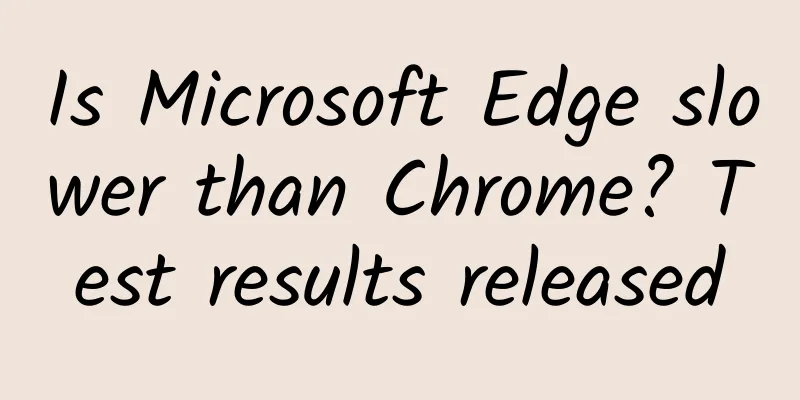A set of pictures to understand Android, this foodie

|
If you have been to the Google headquarters in Mountain View, California, you will definitely be attracted by the green robots and various dessert sculptures on the lawn of the building. These are the mascots and code names of various versions of the Android system. Obviously, the acquisition of Android in 2005 may be one of Google's most correct investments.
Today, Android is a household name in mobile platforms and one of Google's most important businesses. Interestingly, almost every Android version code is a delicious dessert, which makes the originally cold operating system more humanistic. Let's take a look at the inseparable relationship between Android and desserts. 1. Android Preview In 2003, entrepreneurs led by Andy Rubin (father of Android) founded Android Inc., dedicated to developing a new digital camera system. However, due to limited market prospects, the company quickly turned to the smartphone platform, trying to compete with Nokia Symbian and Microsoft's Windows Mobile. However, funding gradually became a problem, and Google eventually acquired Android Inc in 2005. Andy Rubin began to lead the team to develop a Linux-based mobile operating system, and the green robot image and preview version were born in 2007. 2. Android 1.0 On September 23, 2008, Android 1.0 was released with the first Android phone, HTC Dream, marking the beginning of Android's commercial journey. Although Android 1.0 did not yet adopt the dessert code, it already had core designs such as HTML browser, camera support, integrated Google services, and an app store, which clarified the future development direction. The subsequent minor revision 1.1 was released in early 2009, adding some features and fixing bugs. 3. Android 1.5 Cupcake
Android 1.5, released on April 27, 2009, was the first version in the series to be codenamed after a dessert, and it also opened the "delicious journey" of Android. So why was it named after a dessert? A Google spokesperson once told the media: This is a bit like an internal team matter. Perhaps, bringing happiness to people like desserts is the core concept of the Android team. The main changes in Android 1.5 are support for screen widgets, new MPEG-4 format support, Bluetooth stereo and other minor improvements. In addition, users can also add photos to contacts. 4. Android 1.6 Donut
Donuts are a very popular dessert. American police officers even enjoy free donuts and coffee. Android 1.6 adopted this code name. The changes in 1.6 mainly include support for WVGA resolution screens, better integration of cameras and albums, and improvements to functions such as voice and text search. Android 2.0 Éclair (French éclair)
The code name of Android 2.0 may be a little niche compared to other versions, it is Éclair (French éclair). This hot dog-shaped dessert originated in France and has various recipes. Well-known brands such as L'Éclair de Genie have a variety of flavors such as colorful icing, fresh fruit, cream, chocolate, etc., which is almost as famous as macarons. Back to Android 2.0, the main improvements include support for multiple email accounts, improved typing speed and messaging functions, new digital zoom and flash support for the camera, etc., but the overall interface style has not changed much. The subsequent Android 2.0.1 and 2.1 are mainly for bug fixes and minor improvements. 6. Android 2.2 Froyo
Judging from the naming convention, Android 2.2 should be a minor update of 2.0, but it is not. Therefore, Google also adopted a new code name Froyo (frozen yogurt), a kind of ice cream-like dessert that children like, to hint at its changes. Android 2.2 supports new features such as higher resolution screens, WIFI hotspots, and improved apps in the app store, which supports automatic updates. Other improvements include OTA upgrades, app installation to SD cards, support for USB/Bluetooth keyboards, offline map storage, etc., and performance has also been greatly optimized. 7. Android 2.3 Gingerbread
If you have watched "Shrek", you must have been impressed by the interesting gingerbread man in it. In fact, it is also the code name of Android 2.3. Gingerbread is actually an ancient dessert that can be traced back to the ancient Roman Empire. It is made of ginger, flour, honey, brown sugar and other ingredients. Now there are more varieties and it is deeply loved by children. Android 2.3, released in 2010, has a more modern interface style, and its overall speed and ease of use have also been greatly improved. At the same time, NFC is also fully supported, and files can be transferred between Android devices by touching them. At the same time, the underlying support of sensors such as gyroscopes and barometers also allows mobile phones to accurately track user locations and movements. 8. Android 3.0 Honeycomb Android 3.0, which came out with the Motorola Xoom in 2011, is an outlier in the series. It does not have the familiar dessert code name and is designed only for tablets. Although it provides multi-core processor support and a new interface design, Google did not continue the platform strategy of separating mobile phones and tablets. The subsequent Android 4.0 supports multiple devices, reducing the increasingly serious fragmentation problem. 9. Android 4.0 Ice Cream Sandwich
Ice Cream Sandwich looks like an ice cream sandwich, but the two slices are actually chocolate cookies, which tastes more delicious. At the end of 2011, Google used it as a new code name and released Android 4.0. Android 4.0 adopts a new design language, which looks more modern. It also integrates new default fonts, supports home screen folders, 1080P video recording, face unlocking and other new features, and there are also quite a few underlying improvements. 10. Android 4.1 Jelly Bean Jelly Bean is a very popular candy in the European and American markets. It has a crystal clear colored sugar coating on the outside and soft candy on the inside. The name is very vivid. At the same time, it is also the code name of Android 4.1 released by Google in 2012. The main purpose of Android 4.1 is to improve performance. The interface response speed reaches 60 frames per second, which is smoother. In addition, the system also supports multi-channel audio and USB audio, and third-party skins have better compatibility. The subsequent Android 4.2 and 4.3 also used the "Jelly Bean" code name, adding new features such as lock screen camera shortcuts, GL ES 3.0 graphics engine, and 4K resolution. 11. Android 4.4 KitKat Before the release of Android 4.4, it was widely rumored that it was codenamed Lime Pie, but in the end it was named after Nestle's KitKat chocolate, which was quite surprising. Of course, Google obtained Nestle's authorization. KitKat is similar to a crispy wafer biscuit with flavors such as chocolate and matcha. The Nestle chocolate wafers sold in China are similar to it, but do not use the KitKat trademark. Android 4.4 modified the interface to a flatter design, and the overall style was more lively, which was quite consistent with its code name. In addition, the interface and functions were also slightly adjusted, adding a full-screen mode and color scheme, strengthening the active voice function, optimizing RAM performance, etc. Google's Nexus 5 was also launched as the first device to be equipped with it. 12. Android 5.0 Lollipop
Android 5.0, released last year, uses the code name Lollipop, a dessert popular among people all over the world, and also presets the overall style to change in a relaxed and pleasant direction. In fact, the material design does make Android 5.0 look much more beautiful, and integrates many advanced design concepts, allowing messages to be presented to users more intelligently. Of course, the improved performance, battery life and new smart lock functions are also impressive. |
<<: Programming? Forget it. I'll just keep wandering.
>>: 10 Things iOS Users Can Make Fun of Android for Now
Recommend
Pornographic mobile games investigated: Just wear more clothes?
These days, gamers may find that the female charac...
Reasons for freezing VIVO developer account and application process for unblocking
Reasons for freezing developer accounts and the p...
The reason why you feel depressed in autumn and winter has been found! Do these things to stay away from seasonal depression!
The temperature has dropped suddenly in the past ...
Why did Xiaomi make its largest investment in iQiyi?
The US$1 billion "meeting gift" that Xi...
The Russia-Ukraine conflict has caused a shortage of neon gas supply. Will the semiconductor industry be "choked"?
Ukraine is currently the country with the largest...
"Ecosystem" is always mentioned. What are the differences in the ecosystem of the video cloud market?
2015 is destined to be a big year for cloud compu...
Who is suitable to be a player in private domain traffic?
1. What is a private traffic pool? When it comes ...
5 aspects to understand private domain traffic!
Private domain traffic is a popular term in the I...
[Skills] 3 principles and 4 strategies for community topic UGC operations
Community content production is generally divided...
Cherish entrepreneurship and stay away from entrepreneurial streets
[[132340]] In fact, when I was invited to join En...
Employees who have worked in startups and BAT explain the differences between the two
Many people flee from BAT because they can't ...
80% of PS4 players have never seen Drake? Game experience of "Uncharted: Drake Collection"
Since Sony officially announced "Uncharted 4...
13 tips to teach you how to create a perfect WeChat public account layout!
Cover The article cover is the first information ...
The most powerful bird of prey turns out to be a big bald man?
Around 3500 BC, a large number of humans migrated...
7 days after the mini program was launched, Luo Pang ran away with 10 million users...
Before January 9, Zhang Xiaolong’s several rounds...









